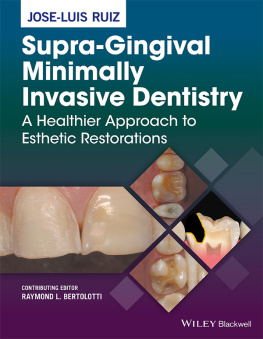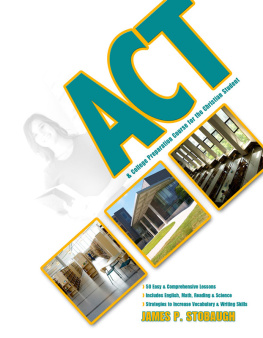Twisk James van - Surface Preparation Techniques for Adhesive Bonding
Here you can read online Twisk James van - Surface Preparation Techniques for Adhesive Bonding full text of the book (entire story) in english for free. Download pdf and epub, get meaning, cover and reviews about this ebook. City: Amsterdam, year: 2013;2012, publisher: Elsevier Science;Elsevier;WA, genre: Children. Description of the work, (preface) as well as reviews are available. Best literature library LitArk.com created for fans of good reading and offers a wide selection of genres:
Romance novel
Science fiction
Adventure
Detective
Science
History
Home and family
Prose
Art
Politics
Computer
Non-fiction
Religion
Business
Children
Humor
Choose a favorite category and find really read worthwhile books. Enjoy immersion in the world of imagination, feel the emotions of the characters or learn something new for yourself, make an fascinating discovery.

- Book:Surface Preparation Techniques for Adhesive Bonding
- Author:
- Publisher:Elsevier Science;Elsevier;WA
- Genre:
- Year:2013;2012
- City:Amsterdam
- Rating:4 / 5
- Favourites:Add to favourites
- Your mark:
- 80
- 1
- 2
- 3
- 4
- 5
Surface Preparation Techniques for Adhesive Bonding: summary, description and annotation
We offer to read an annotation, description, summary or preface (depends on what the author of the book "Surface Preparation Techniques for Adhesive Bonding" wrote himself). If you haven't found the necessary information about the book — write in the comments, we will try to find it.
Surface Preparation Techniques for Adhesive Bonding — read online for free the complete book (whole text) full work
Below is the text of the book, divided by pages. System saving the place of the last page read, allows you to conveniently read the book "Surface Preparation Techniques for Adhesive Bonding" online for free, without having to search again every time where you left off. Put a bookmark, and you can go to the page where you finished reading at any time.
Font size:
Interval:
Bookmark:

Second Edition
Raymond F. Wegman
James Van Twisk

William Andrew is an imprint of Elsevier
The Boulevard, Langford Lane, Kidlington, Oxford OX5 1GB, UK
225 Wyman Street, Waltham, MA 02451, USA
Copyright 2013 Elsevier Inc. All rights reserved
No part of this publication may be reproduced, stored in a retrieval system or transmitted in any form or by any means electronic, mechanical, photocopying, recording or otherwise without the prior written permission of the publisher
Permissions may be sought directly from Elseviers Science & Technology Rights Department in Oxford, UK: phone (+44) (0) 1865 843830; fax (+44) (0) 1865 853333; email: , and selecting Obtaining permission to use Elsevier material
Notice
No responsibility is assumed by the publisher for any injury and/or damage to persons or property as a matter of products liability, negligence or otherwise, or from any use or operation of any methods, products, instructions or ideas contained in the material herein. Because of rapid advances in the medical sciences, in particular, independent verification of diagnoses and drug dosages should be made
British Library Cataloguing-in-Publication Data
A catalogue record for this book is available from the British Library
Library of Congress Cataloging-in-Publication Data
A catalog record for this book is available from the Library of Congress
ISBN: 978-1-4557-3126-8
For information on all Elsevier publications visit our web site at books.elsevier.com
Printed and bound in the US
12 13 14 15 16 10 9 8 7 6 5 4 3 2 1

To all those engineers and scientists who have dedicated their careers to the advancement of the field of materials and processing for adhesive bonding; and to my wife, Rose, whose encouragement, indulgence, and sacrifice made this book possible.
The purpose of this handbook is to provide information on processing adherends prior to adhesive bonding. Where sufficient data were available the processes are given in the form of process specifications. Further, where available, data are given to provide potential users with a basis for the selection of the process most suitable for their particular application and facility.
It is known that many of the chemicals used in these processes are hazardous due to their strong oxidizing properties, or may be toxic or hazardous to ones health. It is the users responsibility to assure that proper safety, handling and disposal procedures are implemented and monitored when any of these methods is employed.
Raymond F. Wegman
My grateful thanks to Dr. David W. Levi for his help and encouragement; Dr. John D. Venables and his staff at the Materials and Surface Science Department at Martin Marietta Laboratories, for supplying the numerous micrographs and drawings of treated surfaces.
Raymond F. Wegman
To the best of the Publishers knowledge the information contained in this publication is accurate; however, the Publisher assumes no liability for errors or any consequences arising from the use of the information contained herein. Final determination of the suitability of any information, procedure, or product for use contemplated by any user, and the manner of that use, is the sole responsibility of the user.
Mention of trade names or commercial products does not constitute endorsement or recommendation for use by the Publisher.
The book is intended for information only. It is known that many of the chemicals used in the processes described are hazardous, due to their strong oxidizing properties, or may be toxic or hazardous to ones health. It is the users responsibility to assure that proper safety, handling and disposal procedures are implemented and monitored when any of these methods is employed. Expert advice should be obtained at all times when implementation is being considered.
defines adhesion as the state in which two surfaces are held together by interfacial forces which consist of valence forces or interlocking actions or both. Adhesion between surfaces which are held together by valence forces is called specific adhesion; this is the same type of force which gives rise to cohesion. Cohesion is defined as the state in which particles of a single substance are held together by primary or secondary forces. As used in the field, cohesion is defined as the state in which the particles of the adhesive (or the adherend) are held together.
Adhesion between surfaces in which the adhesive holds the parts together by interlocking action is known as mechanical adhesion.
Both specific adhesion and mechanical adhesion are important to the understanding of how adhesion is affected by surface preparation. Allen in his discussion of the fundamentals of adhesion concluded by stating an adhesive bond achieves its strength from the combination of a variety of sources; (mechanisms) For these mechanisms, the relative importance and the proper way which they should be combined will vary from one example to another, but none should be excluded without very careful consideration and exploration.
According to the theory relating to specific adhesion, this type of adhesion involves the establishment of some kind of attraction between the atoms and the molecules which make up the adhesive and the adherends. These attractions may involve primary bonding forces, which tend to be quite strong; hydrogen bonding, which yields intermediate strength; and the weaker secondary (Van der Waals) forces.
Primary bonding may be covalent or ionic in nature. Covalent bonding involves the sharing of electron pairs between adjacent atoms. Ionic or electrostatic forces are the type of primary bonds that are found in ionic crystals. Another type of primary bond is the metallic bond which is similar to the covalent bond except that it involves the valence electrons in the metal. This type of bonding is discussed by Verink
Secondary bonding involves dipole-dipole interactions, induced dipole interactions and dispersion forces. Secondary bonding becomes important in adhesion when nonpolar or chemically inert surfaces are involved. Hydrogen bonding may be considered a special case of dipole interaction, since hydrogen bonds result from the sharing of a proton by two electron-negative atoms. However, hydrogen bond strengths are of the same order as a weak primary bond.
Another type of bond, discussed by DeLollis , is described as a chemisorbed bond. This type of bonding is proposed as the reason why adhesive promoters, such as primers and coupling agents, are successful in overcoming potentially weak boundary layers and result in good durable bonds.
In dealing with specific adhesion, good contact must be obtained between the adhesive and the surface of the adherend. To obtain this molecular contact with a solid adherend requires the wetting of the solid surface by the liquid adhesive. During the bonding process even the solid adhesive must go through a liquid phase. To understand the conditions of adequate wetting one must consider the role of surface energetics in adhesion. This, simply stated, requires that in order for a liquid to wet and spread on a solid surface the critical surface tension of the solid or solids must be greater than the surface tension of the liquid. In the case of polar solids such as metals and metal oxides this requirement is easily met, because the surface energies of the solid, provided that the surfaces are clean, are greater than 500 dyne/cm while the surface energies of the liquid adhesives are less than 500 dyne/cm .
Font size:
Interval:
Bookmark:
Similar books «Surface Preparation Techniques for Adhesive Bonding»
Look at similar books to Surface Preparation Techniques for Adhesive Bonding. We have selected literature similar in name and meaning in the hope of providing readers with more options to find new, interesting, not yet read works.
Discussion, reviews of the book Surface Preparation Techniques for Adhesive Bonding and just readers' own opinions. Leave your comments, write what you think about the work, its meaning or the main characters. Specify what exactly you liked and what you didn't like, and why you think so.










